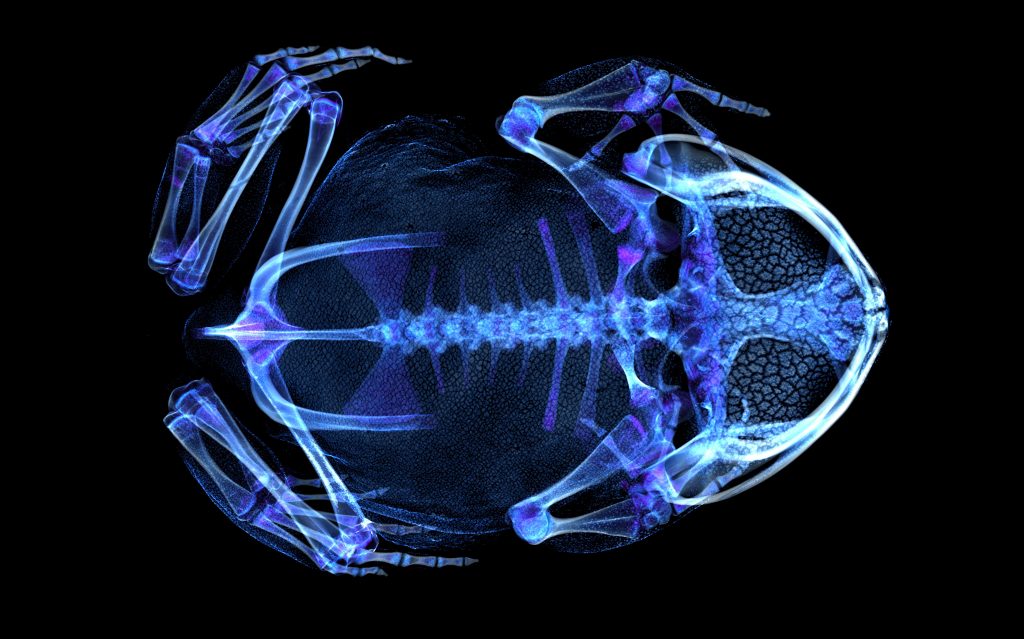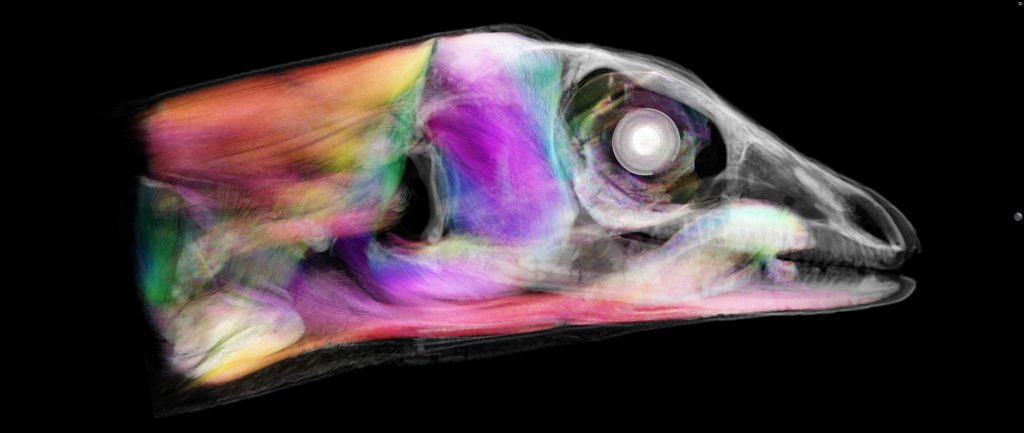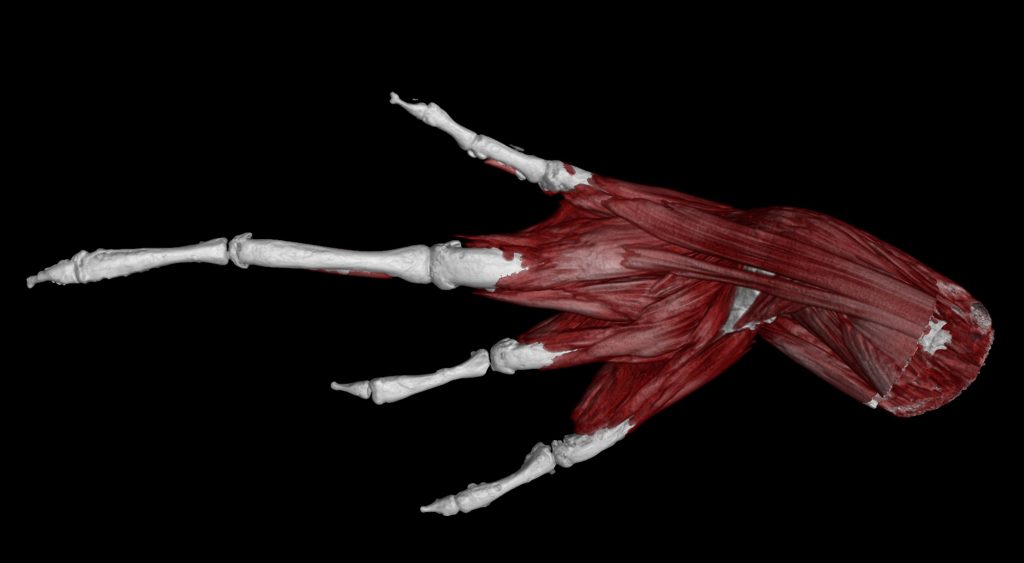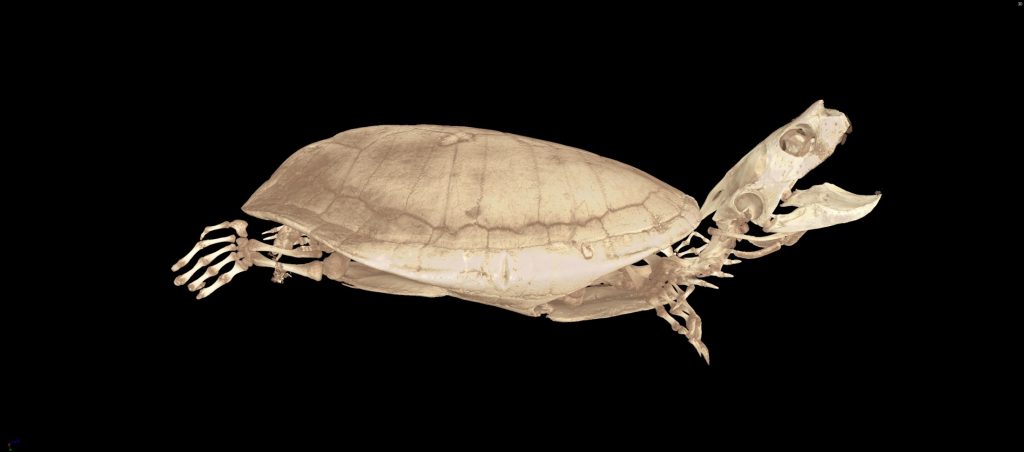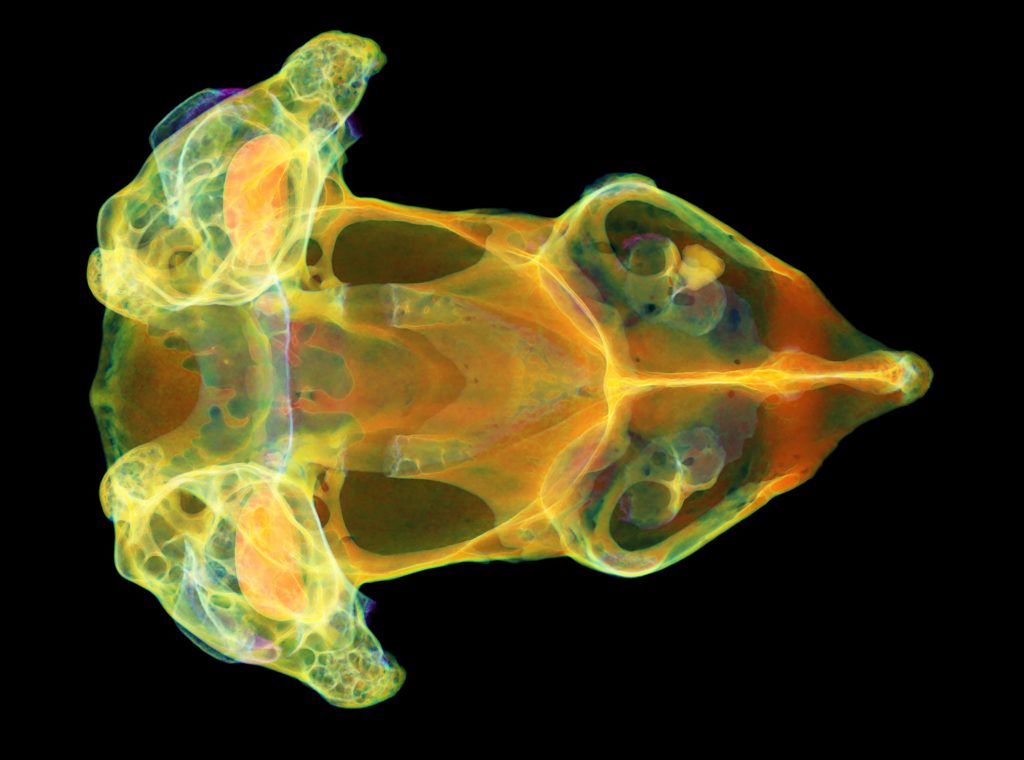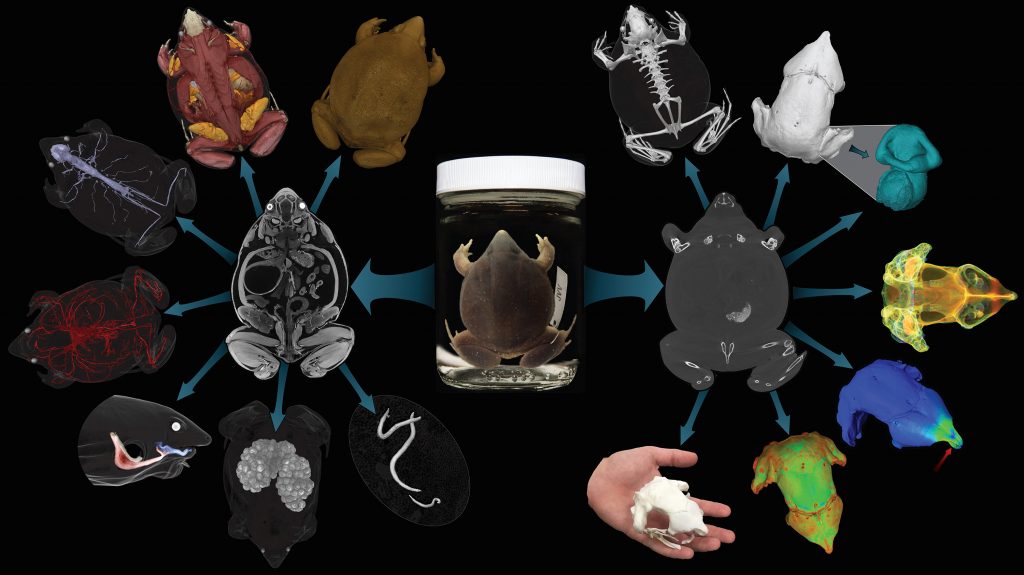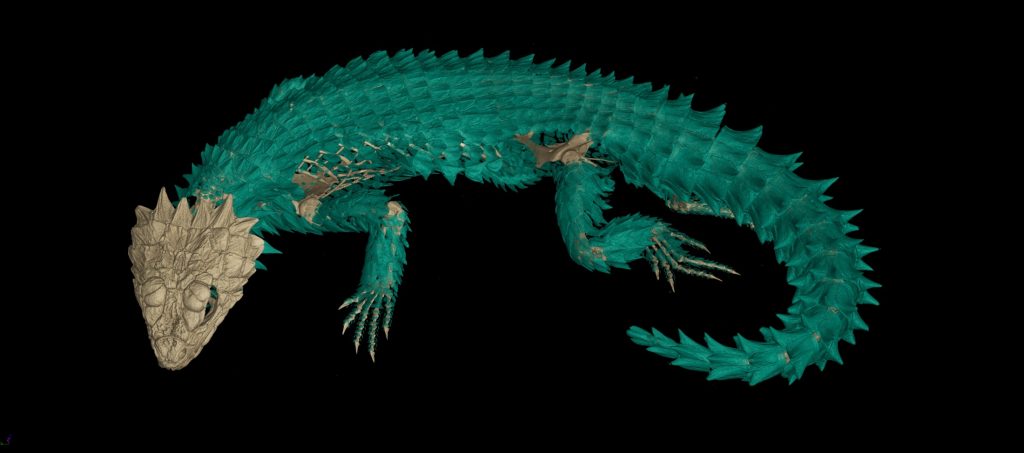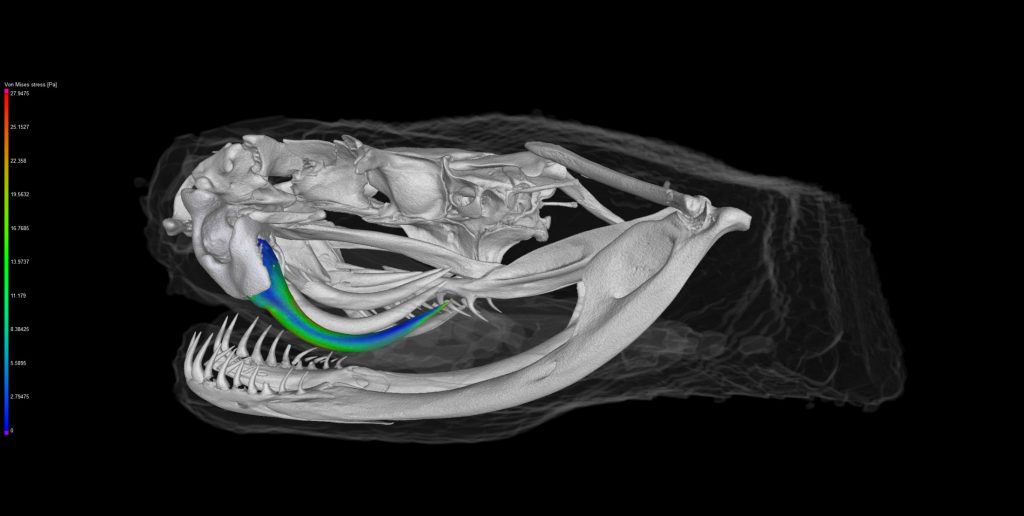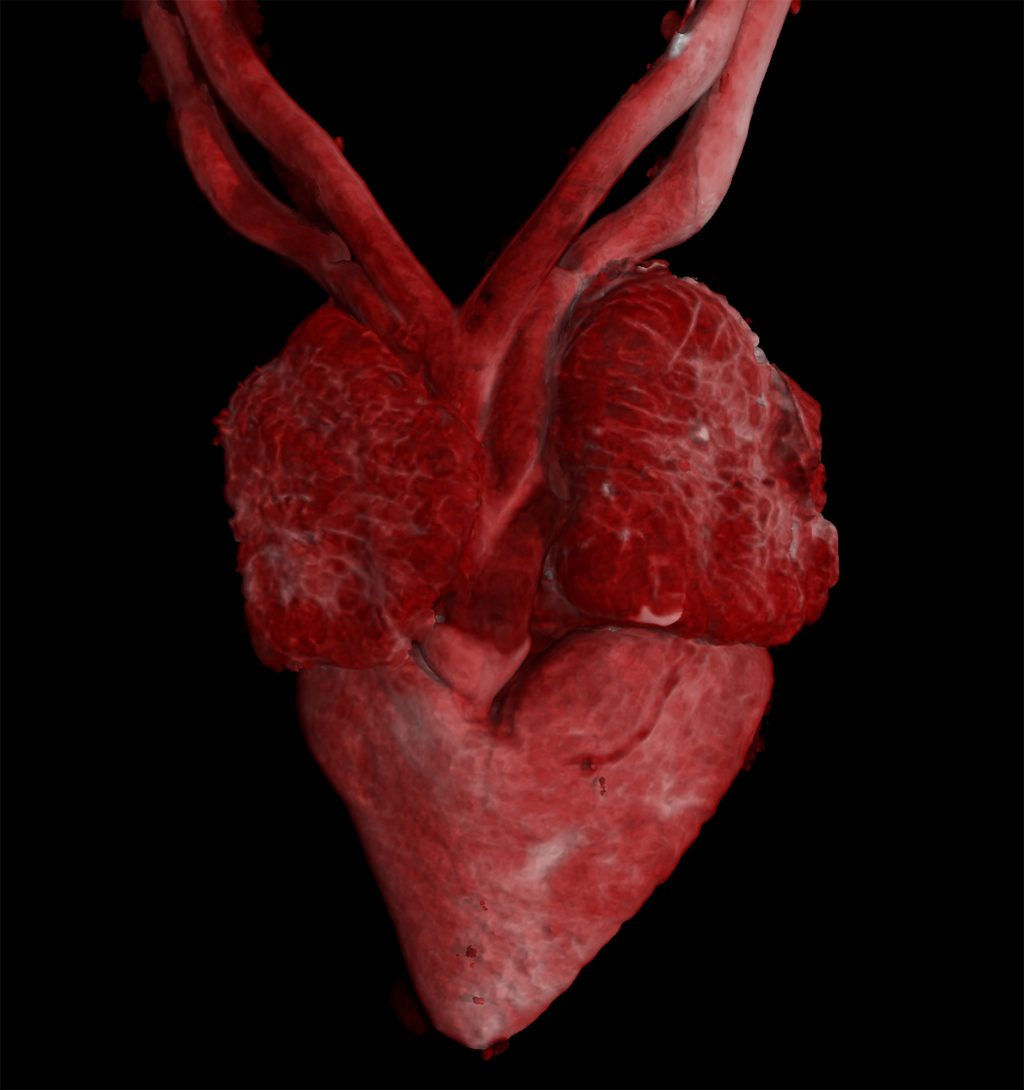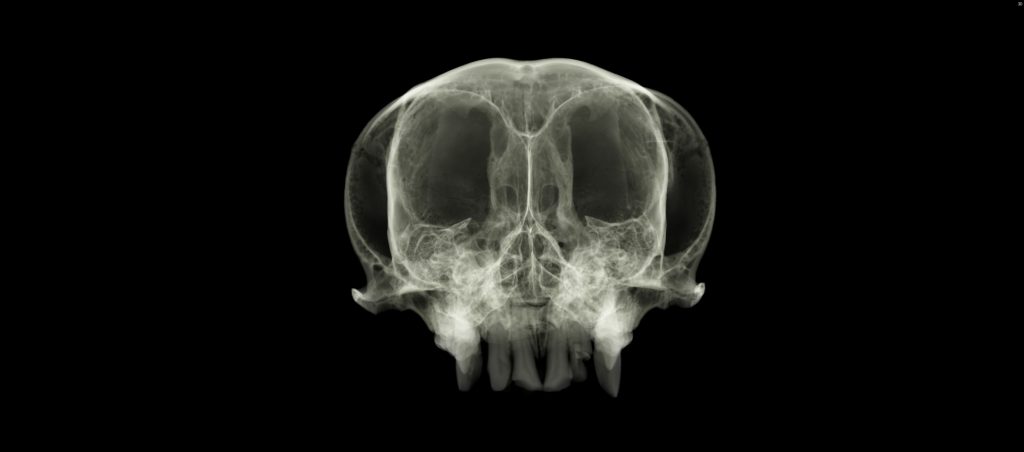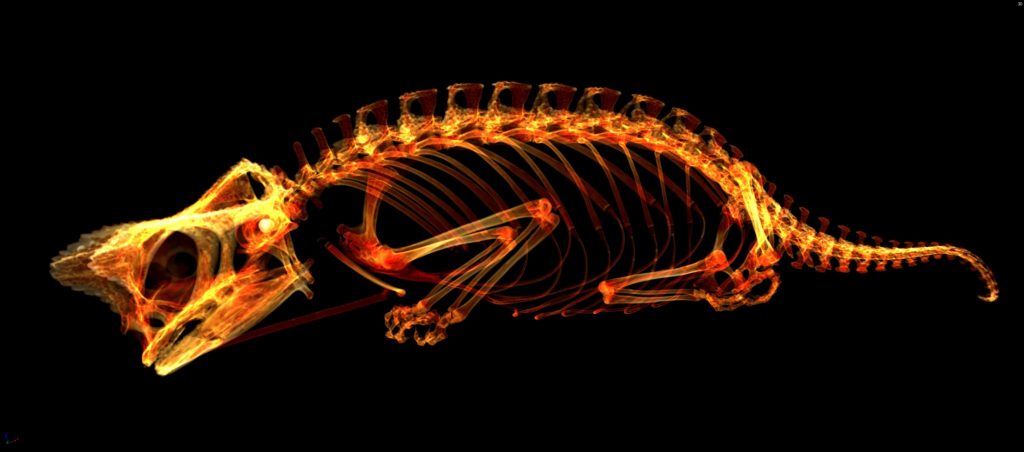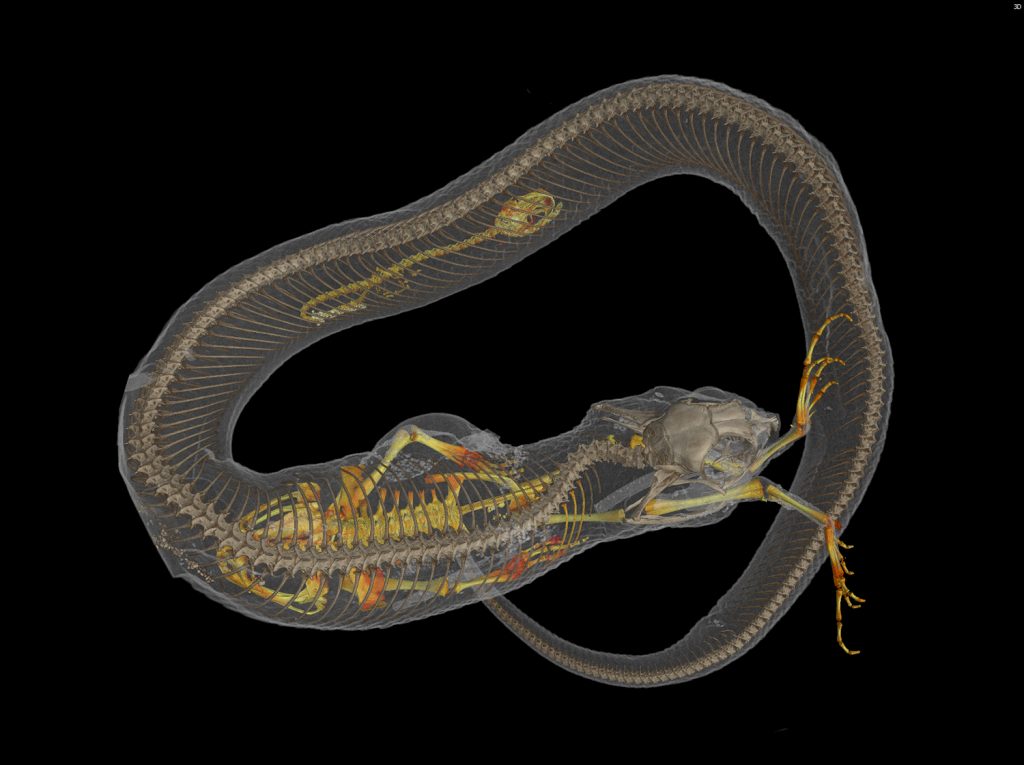What is oVert?
oVert, short for openVertebrate, is a new initiative to provide free, digital 3-D vertebrate anatomy models and data to researchers, educators, students and the public. Over the next four years, the oVert team will CT scan 20,000 fluid-preserved specimens from U.S. museum collections, producing high-resolution anatomical data for more than 80 percent of vertebrate genera.
CT scanning is a nondestructive technology that reveals a specimen inside and out — its skeleton, muscles, circulatory and nervous systems, internal organs, parasites, eggs and stomach contents.
A selection of specimens will also be scanned with contrast-enhancing stains to characterize soft tissues.
These digital images and 3-D mesh files will be open for exploration, download and 3-D printing on MorphoSource, an open-access online database. These new media will provide unprecedented global access to valuable specimens in museum collections and enhance the research value of existing data-rich specimens in iDigBio.
oVert is a multi-institutional project funded by the National Science Foundation.
How does oVert complement other museum digitization efforts?
oVert is the first thematic collection network (TCN) to provide national and international research communities with freely-accessible, digital, 3-D data for internal anatomy across vertebrate diversity.
In doing so, the initiative supports the mission of NSF’s Advancing Digitization of Biodiversity Collections (ADBC) program and iDigBio, building on previous NSF investments in digitizing vertebrate collections by making 3-D anatomical data available to scientists, students and educators around the world.
What kind of data will oVert provide?
oVert will primarily focus on providing two types of data: raw tomography data, also known as slice files, for researchers who have access to 3-D rendering software and 3-D models that can be viewed online or downloaded and 3-D printed.
What are oVert’s education and outreach components?
The oVert team will train museum specialists to produce, curate and distribute 3-D anatomical data and will offer guidance to researchers on how to use these data. The team will also teach high school and undergraduate students to create 3-D anatomical models.
To increase the use of digital specimens by K-12 STEM educators, the team will hold teacher-driven workshops that generate freely available lesson plans focused on specific science standards based on digital and printed 3-D models of specimens in U.S. museum collections.
Can international research institutions participate in oVert?
Funding is restricted to digitizing specimens in U.S. collections. The oVert team, however, can provide guidance to researchers at international institutions interested in CT scanning specimens, uploading their data to MorphoSource or forming similar collaborative networks.
How do I get involved in oVert?
Contact co-principal investigator Ed Stanley at elstanley@flmnh.ufl.edu.
How can I upload my own data?
Anyone can upload their own data to MorphoSource. Read MorphoSource’s guide to getting started.
What is oVert’s approach to copyright issues?
oVert data is freely available for research, education and other non-commercial uses. To use these data in a publication, please adhere to the wishes of both the data author and data owner regarding the acknowledgment and citation of their data on MorphoSource.
Data housed on MorphoSouce cannot be used for commercial purposes or financial gain unless MorphoSource administrators have been notified of and approve this use in writing. Inquiries about licensing data from museum specimens for commercial uses should be directed to the museum that owns that specimen.
Read MorphoSource’s terms and conditions of use.
Who is involved in oVert?
Principal investigators are listed below. Read the full list of PIs, co-PIs and their affiliations.
University of Florida
David Blackburn, lead principal investigator
Academy of Natural Sciences of Drexel University
Mark Sabaj
California Academy of Sciences
Luiz Rocha
Cornell University
Casey Dillman
Duke University
Douglas Boyer, co-PI on UF subaward
Field Museum of Natural History
John Bates
Harvard University
James Hanken
Louisiana State University
& Agricultural and Mechanical College
Christopher Austin
Texas A&M University
Kevin Conway
University of California, Berkeley
Carol Spencer
University of California, San Diego, Scripps Institution of Oceanography
Philip Hastings
University of Chicago
Zhe-Xi Luo, co-PI on Field Museum subaward
University of Kansas
Luke Welton
University of Michigan
Daniel Rabosky
University of Texas, Austin
David Cannatella
University of Washington
Luke Tornabene
Virginia Institute of Marine Science
Sarah Huber
Yale University, Peabody Museum of Natural History
Gregory Watkins-Colwell
Learn more about Research and Collections at the Florida Museum.
Read more about oVert on the Museum website and in Science magazine.
